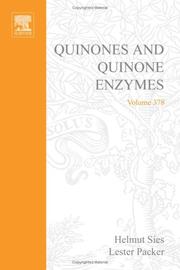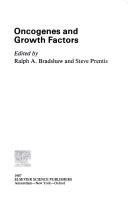| Listing 1 - 4 of 4 |
Sort by
|
Book
Year: 2011 Publisher: Bruxelles: UCL,
Abstract | Keywords | Export | Availability | Bookmark
 Loading...
Loading...Choose an application
- Reference Manager
- EndNote
- RefWorks (Direct export to RefWorks)
For half a century, researches sought a link between muscle contraction and changes in peripheral organs in the form of an « exercise factor », which could be released from skeletal muscle during contraction and mediate some of the exercise-induced metabolic changes in other organs. We have suggested that cytokines or others peptides that are produced, expressed and relased by muscle fibres and exert autocrine, paracrine or endocrine effects should be classified as “myokines”. Thus, skeletal muscle is the largest endocrine organ in the human body, producing and releasing myokines, which exert specific endocrine effects on other organs, such as the liver and the adipose tissue. Other myokines will work via paracrine mechanisms, exerting, angiogenetic effects for example, whereas yet other myokines work via autocrine mechanisms and influence signalling pathways involved in muscle metabolism. In conclusion, it has been suggested that myokines may contribute to exercise-induced protection against, for example, several chronic diseases Durant plus d’un demi-siècle, les chercheurs pensèrent avoir trouvé un lien entre la contraction musculaire et des effets immunitaires et ce, sous la forme d’un « exercise factor » qui pourrait être libéré à partir du muscle squelettique durant la contraction et exercer certains effets métaboliques se produisant pendant ou suite à l’exercice physique au sein s’autres organes. Dès lors, il fut suggéré que les cytokines ou autres peptides qui sont produits, exprimés et libérés par les fibres musculaire et exerçant des effets autocrines, paracrines ou endocrines devraient être nommées « myokines ». Ainsi, le muscle squelettique est le plus grand organe endocrine du corps humain, produisant et libérant des myokines, qui exercent des effets encrines spécifiques sur d’autres organes, tels que le foie ou le tissu adipeux. D’autres myokines exercent, via des mécanismes paracrines, des effets angiogéniques par exemple, tandis que d’autres encore, via des mécanismes autocrines, activent des voies de signalisations impliquées dans le métabolisme musculaire. En résumé, il serait fort à penser que les myokines puissent contribuer aux effets bénéfiques de l’exercice physique sur la santé, par exemple, à l’effet protecteur contre de nombreuses maladies chroniques
Muscle Contraction --- Cytokines --- Paracrine Communication --- Exercise --- Adenylate Kinase

ISSN: 00766879 ISBN: 0121827828 0121827860 9786611011499 1281011495 0080497209 9786611011451 1281011452 0080497160 9780121827861 9780121827823 Year: 2004 Volume: 378-382 Publisher: San Diego, CA : Elsevier Academic Press,
Abstract | Keywords | Export | Availability | Bookmark
 Loading...
Loading...Choose an application
- Reference Manager
- EndNote
- RefWorks (Direct export to RefWorks)
Quinones are members of a class of aromatic compounds with two oxygen atoms bonded to the ring as carbonyl groups. This volume covers more clinical aspects of quinines, such as anticancer properties, as well as their role in nutrition and in age-related diseases.*Mitochondrial Ubiquinone and Reductases*Anticancer Quinones and Quinone Oxido-Reductases*Quininone Reductases: Chemoprevention, Nutrition*Quinones and Age-Related Diseases
Enzymes -- Analysis. --- Enzymes. --- Glutathione. --- Quinone. --- Quinoproteins. --- Ubiquinones. --- Human Anatomy & Physiology --- Health & Biological Sciences --- Animal Biochemistry --- Amine Oxidoreductases. --- Antineoplastic agents. --- Gene Expression Regulation. --- Paracrine Communication. --- Quinone Reductases. --- Quinones. --- Ubiquinone. --- Xenobiotics. --- Ubiquinone --- Quinones --- Enzymes --- Organic Chemicals --- Enzymes and Coenzymes --- Coenzymes --- Benzoquinones --- Chemicals and Drugs --- Cofactors, Enzyme --- Enzyme Cofactors --- Coenzymes and Enzymes --- Chemicals, Organic --- Biocatalysts --- Coenzyme Q --- 2,5-Cyclohexadiene-1,4-Diones --- o-Benzoquinones --- p-Benzoquinones --- 1,2-Benzoquinones --- 1,4-Benzoquinones --- Benzodiones --- Cyclohexenes --- Molecular Mechanisms of Pharmacological Action --- Coenzyme --- Enzyme Cofactor --- Cofactor, Enzyme --- Organic Chemical --- Chemical, Organic --- Biocatalyst --- Enzyme --- Analysis.
Book
ISBN: 3319275097 3319275119 Year: 2016 Publisher: Cham : Springer International Publishing : Imprint: Springer,
Abstract | Keywords | Export | Availability | Bookmark
 Loading...
Loading...Choose an application
- Reference Manager
- EndNote
- RefWorks (Direct export to RefWorks)
This book describes the diverse roles that growth factors and cytokines play in skeletal muscle. The extracellular environment has profound effects on the biology of skeletal muscle. The soluble portion of this environment includes a rich milieu of growth factors and cytokines which have been shown to regulate virtually all facets of the response of skeletal muscle to external stimuli, whether it be exercise induced metabolic shifts, remodeling in response to trauma or loading of the ongoing pathology associated with neuromuscular disease. The chapters included in this work illustrate growth factors that directly affect skeletal muscle cells and those which influence non-muscle cells that contribute to the biology of skeletal muscle as a whole tissue. The current state of the art, with the advent of systems biology, allows for the delineation of signaling networks which are regulated by suites of growth factors. This is in stark contrast to early more traditional studies, which only examined the effects of isolated growth factors on the activity of skeletal muscle precursor cells in tissue culture. The work presented in this volume ranges from reviewing and analyzing the roles of individual growth factors in detail, to the complex interplay of multiple soluble factors in the control of muscle functional, and dysfunctional states. The material covered in this volume will particularly suit readers from a range of research fields spanning general muscle biology and physiology, and those working on diseases and conditions affecting skeletal muscle both directly and indirectly.
Microbiology & Immunology --- Biology --- Health & Biological Sciences --- Muscles --- Musculoskeletal system. --- Muscle cells. --- Regeneration. --- Myocytes --- Locomotor system --- Musculo-skeletal system --- Skeletomuscular system --- Cells --- Cytokines. --- Human physiology. --- Biochemistry. --- Cytokines and Growth Factors. --- Human Physiology. --- Medical Biochemistry. --- Human biology --- Medical sciences --- Physiology --- Human body --- Cellular immunity --- Immune response --- Biological chemistry --- Chemical composition of organisms --- Organisms --- Physiological chemistry --- Chemistry --- Regulation --- Composition --- Muscle, Skeletal. --- Intercellular Signaling Peptides and Proteins. --- Growth Factors --- Paracrine Peptide Factors --- Paracrine Protein Factors --- Peptide Factors, Paracrine --- Paracrine Communication --- Peptide Hormones --- Anterior Tibial Muscle --- Gastrocnemius Muscle --- Muscle, Voluntary --- Plantaris Muscle --- Skeletal Muscle --- Soleus Muscle --- Muscle, Anterior Tibial --- Muscle, Gastrocnemius --- Muscle, Plantaris --- Muscle, Soleus --- Muscles, Skeletal --- Muscles, Voluntary --- Skeletal Muscles --- Tibial Muscle, Anterior --- Voluntary Muscle --- Voluntary Muscles --- Growth factors. --- Medical biochemistry. --- Medical biochemistry --- Pathobiochemistry --- Pathological biochemistry --- Biochemistry --- Pathology --- Cell growth factors --- Cellular growth factors --- Growth peptides --- Growth promoting substances --- Growth substances --- Peptide growth factors --- Peptide regulatory factors --- Polypeptide growth factors --- Cytokines --- Peptides

ISBN: 0444808272 Year: 1987 Publisher: Amsterdam Elsevier Science Publishers
Abstract | Keywords | Export | Availability | Bookmark
 Loading...
Loading...Choose an application
- Reference Manager
- EndNote
- RefWorks (Direct export to RefWorks)
Oncology. Neoplasms --- Human genetics --- Molecular biology --- Human embryology --- Cell Transformation, Neoplastic --- Growth Substances --- Oncogenes --- Receptors, Endogenous Substances --- collected works --- Cell Transformation, Neoplastic. --- Intercellular Signaling Peptides and Proteins. --- Oncogenes. --- Receptors, Cell Surface. --- Cell Surface Hormone Receptors --- Endogenous Substances Receptors --- Cell Surface Receptors --- Hormone Receptors, Cell Surface --- Binding Sites --- Hormones --- Ligands --- Receptor Cross-Talk --- Oncogene --- Transforming Gene --- Transforming Genes --- Gene, Transforming --- Genes, Transforming --- Growth Factors --- Paracrine Peptide Factors --- Paracrine Protein Factors --- Peptide Factors, Paracrine --- Paracrine Communication --- Peptide Hormones --- Neoplastic Cell Transformation --- Transformation, Neoplastic Cell --- Tumorigenic Transformation --- Neoplastic Transformation, Cell --- Cell Neoplastic Transformation --- Cell Neoplastic Transformations --- Cell Transformations, Neoplastic --- Neoplastic Cell Transformations --- Neoplastic Transformations, Cell --- Transformation, Cell Neoplastic --- Transformation, Tumorigenic --- Transformations, Cell Neoplastic --- Transformations, Neoplastic Cell --- Transformations, Tumorigenic --- Tumorigenic Transformations --- Cell Line, Transformed --- Receptors, Cell Surface --- collected works. --- Cell transformation --- Growth factors --- Intercellular Signaling Peptides and Proteins --- Onc genes --- Cancer genes --- Proto-oncogenes --- Cell growth factors --- Cellular growth factors --- Growth peptides --- Growth promoting substances --- Growth substances --- Peptide growth factors --- Peptide regulatory factors --- Polypeptide growth factors --- Cytokines --- Peptides --- Culture alteration (Cytology) --- Transformation of cells --- Tissue culture --- Growth Factor --- Factor, Growth --- Factors, Growth --- Cell Surface Receptor --- Receptor, Cell Surface --- Surface Receptor, Cell
| Listing 1 - 4 of 4 |
Sort by
|

 Search
Search Feedback
Feedback About UniCat
About UniCat  Help
Help News
News